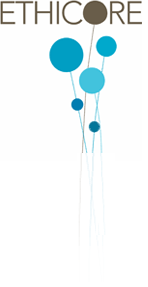
Photo by Andreas Klassen on Unsplash
COVID 19 – Accelerating our virtual productivity
Turning social distance in to social productivity
COVID19 may be leading to travel bans and cancelled events, meetings and workshops, but it doesn’t have to reduce our productivity, social connection and interactions. Virtual sessions can be even more productive, not just saving travel time and carbon, but getting deeper and more focused interaction with our teams and peers. The key is in planning and preparing for productive sessions, and actively facilitating our interactions. We have been developing virtual engagement for years now and have been asked for ideas for virtual team engagement. Here are some of the learnings to be as productive as possible, virtually…
1. Design and facilitate sessions to be productive and responsive to need.
- Sessions need to be planned in advance and actively facilitated. Bring in others from your organisation or professionals to help, where necessary. It can make things more fun and productive, and build confidence of others to do the same.
- Consider what you want to get out of the ‘session(s)’ and what the participants need.
- Design sessions for their purpose: the activities, tools, inputs, discussion flow, technology and timings.
2. Structure sessions with different techniques to respond to different needs
- Consider all channels of communication, collaboration and engagement from webinars, shared working documents, team zones, chat, calls, video, etc.
- Vary your approach between sessions. Try things and fail. We need variety to keep present and engaged. If people are multi-tasking, productivity will drop. So adapt and design for full engagement when their presence is required.
- Take time for the team. People will need their dose of personal social interaction. Giving time for less structured team discussion can help.
- Use collaborative tools to work together online. Set up working documents/propositions and work on them live. It’s an opportunity to work together, not just talk/meet. It makes conversation real.
- Try team working tools to avoid information overload. People don’t need to be included in everything. New tools allow you to check in to the latest discussions on an issue without excessive emails. Keep communicating.
- Broadcast updates only where appropriate. They can be live and/or recorded for people to check in their timezone. Remember – not everything needs to be live, especially if it is about information sharing.
- Keep comments and feedback open. Allow for feedback and discussion through comments/chat for a couple of days to get maximum input. Encourage interaction between people and teams (not just with the ‘host’).
- Structure text based conversations in live documents (up to 20 people live) and in living documents – that gather feedback over days. It is massively productive, allowing multiple people to respond simultaneously, not waiting in turn to speak.
- Use conversation/conference calls to discuss key issues that are emerging but not to get all the opinions out there, i.e. don’t rely on conference calls to get stuff done. Conference calls work to where you want to discuss the issues or to build on ideas. It’s the builds that matter.
3. Get your housekeeping in place so that people are prepared to be productive.
- Ensure people know to be logged with the right tools. For example, people need to be logged in via their computers for working sessions so that they can fully interact and contribute.
- Be clear in advance if video is necessary. For example, if you are working on documents, ask people to keep cameras off so they can focus.
- Be clear in advance if audio is necessary. It might be better to focus on a text based conversation at times.
- Not everything needs to be live. Be clear about that. We have enough FOMO (Fear of missing out) already, so it is important that people know they don’t have to be in all sessions.
- Give clear deadlines for inputs/feedback so that people know they have flexibility to respond in their own time.
4. Develop access and use of available technologies.
- Use all the functions of your available technologies to the full. We often haven’t explored their full capabilities. I don’t take a position on tech – you can use a mix of tools, even in one session (conference call, shared document, chat, etc.).
- We need to make sure that our partners and participants have the necessary access and technology to be able to engage. Support them where necessary.
- There are new tools that could make conferences and events even more productive than in person, allowing even greater transparency of participation and many of the same session formats, e.g. https://hopin.to/ It is worth investigating such creative tools, to enable participants to find and chat with each other without relying on serendipity.
If we want to be carbon neutral and deliver the SDGs then using the COVID 19 crisis to develop productive virtual working is critical. Virtual sessions can be energising, insightful and creative. There is potential to lower our carbon footprints and increase our productivity, if we plan for productive sessions using creative techniques and supportive technologies. Let’s embrace change while we have to.
